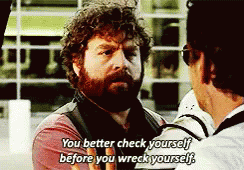Apply the 80/20 principle to your daily tasks
Key Takeaways
- Divide your business tasks into $10-, $100-, $1,000, and $10,000-per-hour activities.
- Apply the 80/20 principle to prioritize the tasks that generate the most income and move your business forward.
- $10,000-per-hour tasks include establishing a business culture, negotiating major deals, and solving problems that others are unable to solve.
Perry Marshall’s book 80/20 Sales and Marketing introduced me to a tool that can greatly increase productivity. In one chapter, Marshall breaks down different activities into $10-per-hour tasks, $100-per-hour tasks, $1,000- and even $10,000-per-hour tasks.
Examples of $10-per-hour tasks are cold calling, stuffing envelopes, driving around un-approved buyers, doing traditional open houses, doing traditional social media, running errands, installing real estate signs, chasing cold leads, answering frivolous emails — basically, the tasks real estate agents spend most of their day doing.
Examples of $100-per-hour activities include solving problems for existing clients, basic customer follow-up, doing social media strategically (rather than haphazardly), monitoring and managing your marketing efforts (rather than just throwing stuff up on a wall and hoping it sticks), prioritizing and planning your day, and delegating $10-per-hour tasks to others. (The last two are potentially $1,000-per-hour activities.)
Examples of $1,000-per-hour activities include delegating $100-per-hour tasks, writing and testing marketing and sales copy (not just implementing marketing you got from someone else but creating your own, testing it, and making it better), building and cultivating sales funnels (platforms that continually make you money or bring in new business), researching new strategies (this type of learning helps you discover the best $10,000-per-hour activities), and implementing the best of the best ideas.
So what activities could possibly be worth $10,000 per hour?
Everyone from admins to CEOs do these activities, even if it’s only for a few minutes a day. Maybe you took a phone call from a difficult client and put out a fire, and that kept your deal together. That is an extremely high dollar-per-hour activity. Other examples of $10,000-per-hour activities include:
Solving problems that others have failed to solve – If you have that ability — that gift — then focus on solving problems that others have failed to solve, and your income will go up significantly. Succeeding at this will have huge implications for your career.
Scaling your $1,000-per-hour activities – In business, to scale means to multiply. If you figure out a way to accomplish a high-dollar activity, and then you’re able to scale it out so that you’re able to impact more people, that’s a $10,000-per-hour activity.
Establishing a business culture – You wouldn’t think so, but if you focus energy on establishing a “business religion,” a culture, around an idea or concept, you’re building a foundation that will pay dividends for many years into the future. It can create a movement, not just a couple of closings. I’m talking about a shift in long-term value and perception. Any business that has been wildly successful — Apple, for example — first established a business culture that drives people to buy all of their products. Shoppers wait in line outside stores in the cold just to be the first to get their new product.
Negotiating major deals – Major deals have huge implications. When you negotiate for your real estate team or office to land a whole new subdivision that they can then go out and market, that’s a $10,000-per-hour activity (at least!).
The 80/20 principle at work
I recommend that you look critically at your own business and how you spend your day. Try to identify the $10-per-hour activities in your day. Identify what you believe you should be doing more of. Are they $100-, $1,000-, or $10,000-per-hour activities? Map those out.
When you plan your day, use the 80/20 principle — the premise that 80 percent of your results come from 20 percent of your efforts. Try to identify what activities generate the majority of your income and make note of what items are distracting you from doing those activities. Prioritize the items you mapped out on your list.
Ask yourself, “If I had to accomplish one or two of these items today, what could I do?” And then do those first. Get up early if you need to. Get the important tasks out of the way. If you decide they’re that vital, you’ll find a way to do them.




0 Comments